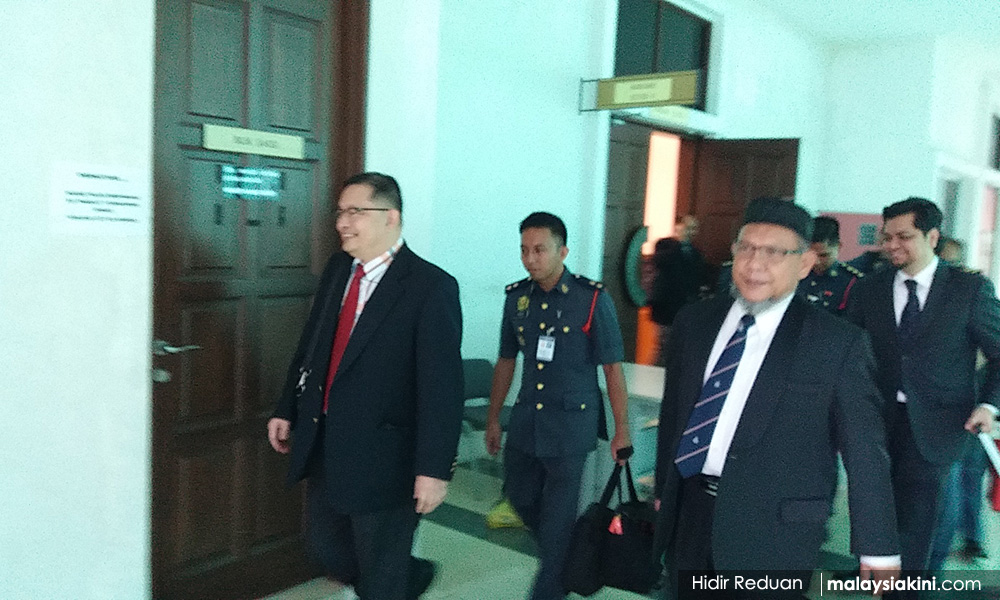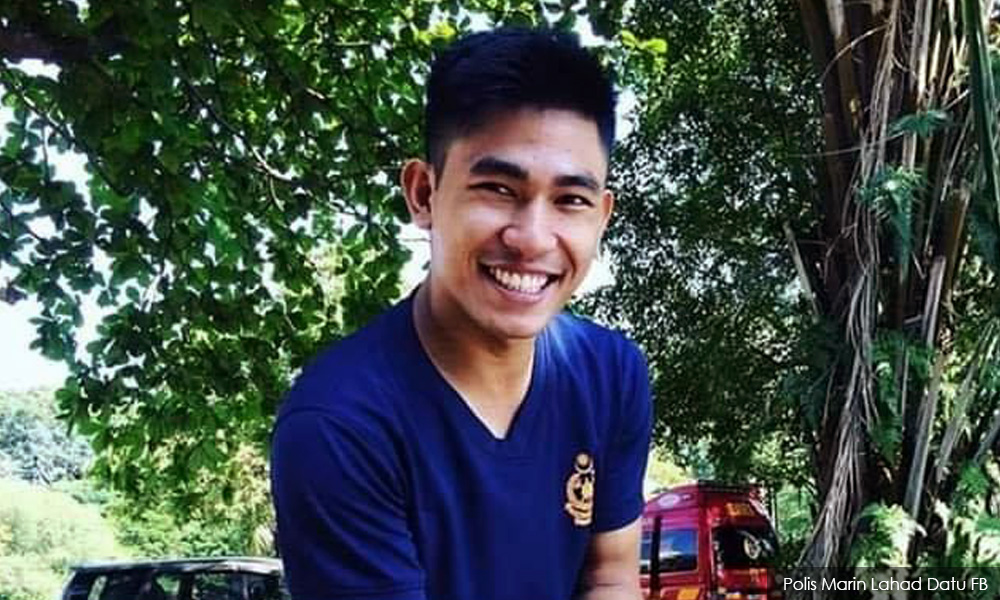
INQUEST | Firefighter Muhammad Adib Mohd Kassim could have been in a semi-conscious state and unable to fend off attackers during the Seafield temple riots last November, the Coroner's Court in Shah Alam heard today.
Retired Universiti Kebangsaan Malaysia forensic pathology professor Shahrom Abd Wahid told the inquest into the cause of Adib's death that the victim would be in a state akin to being in the "twilight zone" due to the injuries sustained during the incident.
Under oral examination from inquest coordinating officer Hamdan Hamzah, Shahrom theorised that Adib may have realised that he was being dragged on the ground, but was not conscious enough to react.
Hamdan: (According to your theory), after the victim fell from the Emergency Medical Rescue Services (EMRS) van, he was dragged. And when this happened, in what stage would he be? Would he be conscious or in a lot of pain?Shahrom: Most likely when the victim was being dragged, he would have started feeling the enormous pain due to his right ribs being broken at the back and front, besides the injuries to his lung.So he is in pain, and probably semi-conscious. There are two elements, one is that he was in shock, while the second is that he was in pain due to the injuries which could stimulate his vagus nerves and causes his heart to beat faster.Hamdan: So in this situation, what would the victim's reaction be? Would he be able to have any reaction?Shahrom: (For example) we may be in a situation where we have a fever, and feel like we are 'flying' (melayang-layang). But this (Adib's case) it is more severe. He would be 'flying' semi-consciously, like what people describe as being in the twilight zone.Hamdan: So, would he realise he was being dragged?Shahrom: He might realise he was being dragged, but to struggle and fight back, no. There wouldn't be such a reaction.
Shahrom, the 29th witness of the inquest, was later allowed to inspect the camouflage Fire and Rescue Department uniform that Adib wore during the incident.
The retired pathologist said that based on his inspection, the trousers had marks which suggested the victim was dragged on the ground – dirt, marks of fraying, and threads that had been severed.
'Victim's chest caved in due to force'
Shahrom had earlier reiterated his theory that Adib was injured when he was pulled out of the EMRS van by attackers, who also kicked its door and caused the firefighter to be pinned between the door and its frame.
In answering questions posed by Hamdan, Shahrom said Adib's lung sustained contusion due to a strong force that hit his chest, which caused the victim's ribs to cave in.
Hamdan: When the victim was hit by a strong force which caused contusion to his chest, what would be his situation then?Shahrom: After he was hit strongly on the right side of his chest, the first thing the victim would be is stunned.He would not have felt the pain instantly, being overwhelmed. If we refer to the video earlier, when he was hit, his chest would have caved in and broke ribs number 2, 3, 4 and 5.And the momentum would injure the front side of his lung. When the door hits his chest, the chest would cave in and break, and the momentum would continue into his lungs, causing the lung to be injured.On the back, he was injured as his body hit the door frame, (but) the momentum was less than on the front, as the momentum was diminishing.That was why only two of the victim's bones were broken on the back, besides being protected by the scapula.And the force (hentakan) only injured the right lung from both the front and back, while the left lung was not injured.
'Why didn't Adib close EMRS van's door during riot'
As Shahrom continued to argue his point that Adib was set upon by angry mob – contrary to two other expert witnesses who said the victim was hit by the door of the EMRS van – the court was shown a video reenactment of the incident.
The retired pathologist told the court that the reenactment was made based on his theory that Adib was holding the van's door ajar while looking back to help its driver steer in reverse.
This was when Adib was approached by his attackers, he said, who pulled the victim out while another kicked at the door.
This theory was challenged by Hamdan, who questioned the logic behind Adib allowing strangers to approach instead of locking himself in the vehicle.
Hamdan: When the door was kicked, surely it would create a loud noise. And when the victim was pinned by the kicked door, woundln't he have shouted (for help)?Shahrom: Maybe. But in this case he was stunned. I believe that shouting does not happen in cases like this. As he was shocked.Hamdan: I put it like this... The victim must have seen his attackers, right? It was not like he did not realise (they were coming)?Shahrom: Firstly, he is a firefighter. So when he saw people approaching, what would be his thought process? What was the likelihood of a firefighter getting assaulted? He did not anticipate an assault, so when people approached him, he did not expect anything. But all of a sudden, he was pulled out.Hamdan: In such a situation, with a riot happening, would the victim still not suspect anything amiss?Shahrom: During a riot – this is what I think – he must have been under the impression that he is a firefighter, and the chances of him being attacked are slim. There have been no incidents before where firefighters are attacked when they respond to a fire.
Hamdan:
Do you still hold that opinion, even though when the FRT in front was attacked and he was being approached by strangers?
Shahrom: This was the first such incident. I think that in his head, such thing could not have happened. Because he could not accept (that fact). That is my opinion.
At the start of the inquest today, which has entered its 27th day, a legal counsel representing the Housing and Local Government Ministry had objected to another expert witness being allowed to listen to Shahrom's testimony.
Syazlin Mansor told the court that Kuala Lumpur Hospital forensics medicine specialist Dr Ahmad Hafizam should not be allowed to sit in the court.
She cited that Ahmad Hafizam had yet to be relieved as a witness in the inquest, and could be called back to testify anytime.
This was supported by lawyer Kamaruzaman A Wahab, who was representing Adib's family.
The notion was however objected by Hamdan who told Coroner Rofiah Mohamad that it is a normal practice for an expert witness to be in court during a hearing.
Syazlin then told the court that she would be fine with the doctor to remain in the courtroom, on condition that he would not coach the DPPs on what questions to ask Shahrom.
This was refuted by Hamdan, who said that the DPPs had never taken instruction from Ahmad Hafizam.
After listening arguments from all parties, Rofiah allowed for the specialist to remain in the court but should not suggest any question to the DPPs.
The hearing was adjourned to tomorrow. - Mkini




No comments:
Post a Comment
Note: Only a member of this blog may post a comment.